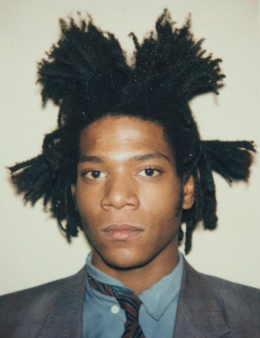
Jean-Michel Basquiat was an American artist who rose to success during the 1980s as part of the Neo-expressionism movement.

Fred Brathwaite, more popularly known as Fab 5 Freddy, is an American visual artist, filmmaker, and hip hop pioneer. He is considered one of the architects of the street art movement. Freddy emerged in New York's downtown underground creative scene in the late 1970s as a graffiti artist. He was the bridge between the burgeoning uptown rap scene and the downtown No Wave art scene. He gained wider recognition in 1981 when Debbie Harry rapped on the Blondie song "Rapture" that "Fab 5 Freddy told me everybody's fly." In the late 1980s, Freddy became the first host of the groundbreaking hip-hop music video show Yo! MTV Raps.
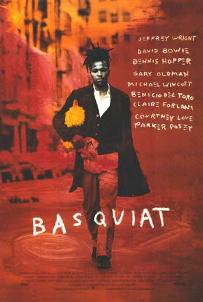
Basquiat is a 1996 American biographical drama film directed, written and co-composed by Julian Schnabel in his feature directorial debut. The film is based on the life of American postmodernist/neo expressionist artist Jean-Michel Basquiat. It is the first film about an American painter written and directed by another artist.
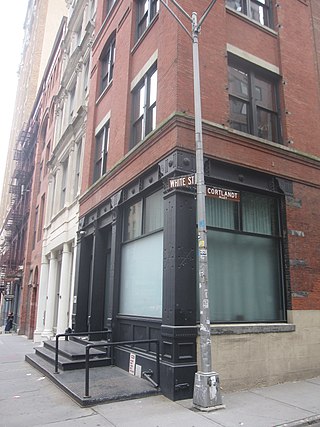
The Mudd Club was a nightclub located at 77 White Street in the TriBeCa neighborhood of Lower Manhattan in New York City. It operated from 1978 to 1983 as a venue for post punk underground music and no wave counterculture events. It was opened by Steve Mass, Diego Cortez and Anya Phillips.
Maripol is an artist, film producer, fashion designer and stylist. She has had an influence on the looks of influential artists such as Madonna and Grace Jones. As part of the 1980s New York downtown scene, she captured the likes of Jean-Michel Basquiat, Keith Haring, Andy Warhol, and Debbie Harry with her Polaroid camera. Maripol also produced films, most notably Downtown 81.
Edo Bertoglio is a Swiss photographer, film director and screenwriter. He is the director of Downtown 81 and Face Addict.
Michael Thomas Holman is a New York-based artist, writer, filmmaker and musician. He is also an early 1980s downtown scene subculturalist and creator of the Hip Hop music program Graffiti Rock. Holman is a founding member, along with Jean-Michel Basquiat, of the experimental band Gray.

Glenn O'Brien was an American writer who focused largely on the subjects of art, music, and fashion. He was featured for many years as "The Style Guy" in GQ magazine and published a book with that title. He worked as a writer and editor at a number of publications, including Rolling Stone, Playboy, Interview, High Times, Spin, and Details. He also published the arts and literature magazine Bald Ego from 2003 to 2005.
SAMO is a graffiti tag originally used on the streets of New York City from 1978 to 1980. The tag, written with a copyright symbol as "SAMO©", and pronounced Same-Oh, is primarily associated with the artist Jean-Michel Basquiat, but was originally developed as a collaboration between Basquiat and Al Diaz.

"Beat Bop" is a song by American hip-hop artists Rammellzee and K-Rob. It was produced and arranged by Jean-Michel Basquiat. Initially, it was made as a test pressing by Tartown Inc. in 1983. That same year, the song was released as a single by Profile Records, and featured in the hip-hop documentary film Style Wars (1983).
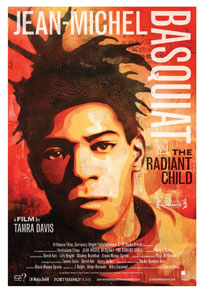
Jean-Michel Basquiat: The Radiant Child is a 2010 documentary film directed by Tamra Davis. It crosscuts excerpts from Davis' on-camera interview with the artist Jean-Michel Basquiat and anecdotes from his friends and associates. The film was shown at the Sundance Film Festival in 2010.
Becky Johnston is an American screenwriter and No Wave filmmaker.

James Allan Curtis, known professionally as Diego Cortez, was an American filmmaker and art curator closely associated with the no wave period in New York City. Cortez was the co-founder of the Mudd Club, and he curated the influential post-punk art show New York/New Wave, which brought the then aspiring artist Jean-Michel Basquiat to fame.
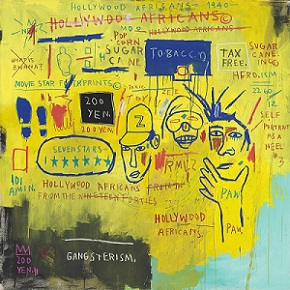
Hollywood Africans is a painting created by American artist Jean-Michel Basquiat in 1983. The artwork is Basquiat's response to the portrayals of African Americans in the entertainment industry.
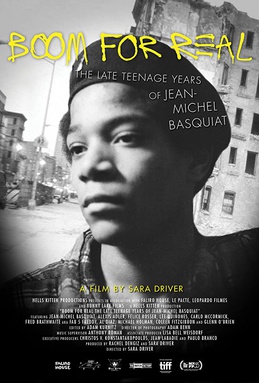
Boom for Real: The Late Teenage Years of Jean-Michel Basquiat is a 2017 American documentary film directed by Sara Driver. It tells the story about Jean-Michel Basquiat and the New York City art scene in the late 1970s. The film had its premiere at the 2017 Toronto International Film Festival on September 8, 2017. It was released in the United States on May 11, 2018.

Untitled (Gem Spa) is a 1982 painting created by American artist Jean-Michel Basquiat in 1982. It is an autobiographical work depicting a sparsely rendered figure atop a bicycle "drowned in darkness."
Gray is an American experimental band formed by artist Jean-Michel Basquiat and filmmaker Michael Holman in 1979, of whom filmmaker Vincent Gallo was also a member. The group was influenced by the members' artist backgrounds and the sonic experimentation of their contemporaries in New York's No Wave scene. Gray performed at venues such as the Mudd Club and CBGB which were the epicenter of New York's underground scene in the late 1970s and early 1980s.
Suzanne Mallouk is a Canadian-born painter, psychiatrist, and psychoanalyst, based in New York City. She is best known for her role within a core of East Village creatives in the 1980s and for her relationship with artist Jean-Michel Basquiat, much of which her friend Jennifer Clement chronicled in Widow Basquiat: A Memoir. In 2015, Vogue magazine listed Basquiat and Mallouk among "The 21 Most Stylish Art World Couples of All Time."
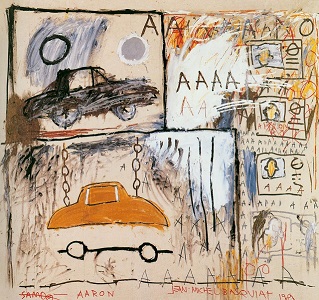
Cadillac Moon is a painting created by American artist Jean-Michel Basquiat in 1981. It is notable for being the first purchased Basquiat painting; bought by singer Debbie Harry for $200.
New York/New Wave was an exhibition curated by Diego Cortez in 1981. Held at the Long Island City gallery P.S.1, it documented the crossover between the downtown art and music scenes. The show featured a coalition of No wave musicians, painters, graffiti artists, poets, and photographers.












